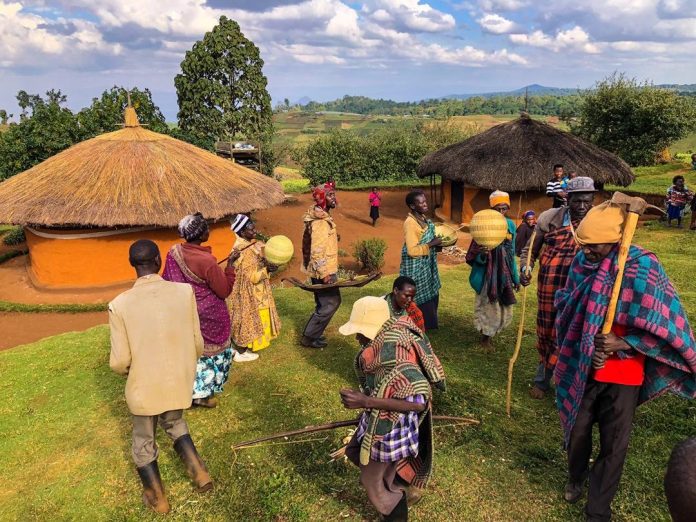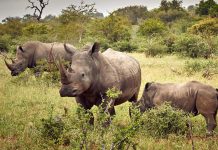The Sebei, also known as the Sabinyi, are a Southern Nilotic ethnic group found across various countries in East Africa, including Eastern Uganda, Western Kenya, the Democratic Republic of Congo, South Sudan, Ethiopia, and Tanzania. In Uganda, they primarily inhabit three districts for instance; Kapchorwa, Bukwo, and Kween.
Within the Sebei community, there are three distinct but closely related tribes residing in the northern and northwestern regions of Mount Elgon and its surrounding plains. These tribes include the Sebei, Varied on Sabei, and Sapei, which originates from Sapin. Additionally, two other groups known as Sor and the Mbai are part of the Sebei territory.
The Sebei territory shares borders with the Republic of Kenya, which is home to the Kalenjin, a larger ethnic group to which the Sebei belong. This proximity contributes to cultural exchanges and interactions between the Sebei and other neighboring communities. Through their shared heritage and geographic location, the Sebei maintain a rich cultural identity while also embracing connections with neighboring groups.
Language
The Sebei people, also known as the Sabiny, primarily speak a language called Kupsabiny. This language is a dialect of Kalenjin and is also spoken by other smaller groups of Kalenjin descent who live around Mount Elgon. The Sebei, along with these smaller groups, inhabit the hills of Mount Elgon and are collectively referred to as the Sabaot.
Kupsabiny serves as a means of communication and expression within the Sebei community, allowing individuals to connect with one another and preserve their cultural heritage. Through this language, they pass down stories, traditions, and knowledge from generation to generation. It plays a vital role in maintaining the unique identity and unity of the Sebei people and the broader Sabaot community.
Clan and lineage in Sebei culture

In Sebei culture, belonging to a clan is a fundamental aspect of identity. Each Sebei individual is a member of a clan, which is a patrilineal social group characterized by strict exogamy. This means that individuals must marry outside of their own clan. Clan membership holds significant importance in a person’s life, often being the first thing one identifies about another person.
There are approximately 200 separate clans among the Sebei people, with each clan tracing its ancestry back to a single founder. The name of the clan is typically formed by adding the prefix “kap” to the founder’s name. However, some clans have names derived from mythic stories or from particular habits or practices associated with the clan’s founder.
Clans play a crucial role in the spiritual and social lives of Sebei individuals, with members feeling a deep connection to their clan and its traditions. Clans are often believed to have a kind of genetic inheritance of traits, further emphasizing their significance within the community.
Sebei Culture
The Sebei people lead a straightforward way of life, primarily focused on agriculture, livestock rearing, and beer production. Jobs commonly held by the Sebei include tending to cattle and cultivating crops, which vary depending on the region they inhabit. Due to their laid-back culture, the need for elaborate social structures is minimal. The Sebei community is generally peaceful, with few instances of criminal activity.
In Sebei culture, there are two main categories of criminal offenses. The most serious offenses involve murder and physical assault, while lower-level offenses may include property disputes or civil conflicts between individuals or groups. Additionally, as a rite of passage, teenage boys and girls undergo circumcision ceremonies within the Sebei community.
Ritual transformation into adulthood in Sebei
In the Sebei culture, the transition from adolescence to adulthood is marked by several ceremonial activities that hold great significance. These ceremonies typically span a period of 1 to 6 months and are a crucial rite of passage for both boys and girls. Boys usually undergo initiation between the ages of 18 to 20, while girls typically participate at a slightly younger age.
Central to these ceremonies is the circumcision of boys, a significant event that symbolizes their transition into manhood. For girls, the counterpart operation involves the complete removal of the labia minora, a procedure known locally as circumcision but more accurately termed labiaectomy or female genital mutilation.
Alongside these primary procedures, there are other ceremonial activities that form part of the initiation process. These may include painting, shaving, and the partial lifting of taboos associated with seclusion.
Female genital mutilation
The Sabiny people of Kapchorwa District in Uganda are known for their practice of female genital mutilation (FGM), also referred to as female circumcision. Traditionally, Sabiny girls are expected to undergo this procedure shortly after reaching puberty, but before marriage. It is believed that removing the clitoris reduces the temptation for promiscuity. Those who refuse to undergo the procedure are socially ostracized, forbidden from marrying, speaking to circumcised women, or undertaking certain tasks considered exclusive to women.
FGM ceremonies typically occur in December of every even-numbered year. During these communal events, several girls undergo the procedure, which lasts for several days. The actual operation, which only takes a few minutes, involves slicing off the clitoris and part of the labia minora. The procedure is performed without anesthesia or disinfectant, using non-sterilized knives, razors, or even sharp metal or glass. Girls are expected to endure the pain silently, as crying out is seen as cowardice.
Short-term complications of FGM include urinary retention, hemorrhaging, and temporary lameness. In the long term, women often experience extreme pain during sexual intercourse and have an increased risk of childbirth complications. Some may even die from the procedure or suffer from HIV transmission and other sexually transmitted diseases due to vaginal tearing.
Public debates about FGM are traditionally taboo, but efforts to eradicate the practice have gained momentum in recent years. In 2010, Uganda made it illegal to carry out or participate in FGM-related events. Despite opposition from traditionalists, President Yoweri Museveni’s government has been committed to abolishing FGM and promoting women’s rights. Jane Francis Kuka, a local educator, was one of the first to openly oppose FGM in the 1970s. She faced strong opposition from community leaders but persisted in her efforts. The formation of the Sabiny Elders Association in 1992 marked a breakthrough in the campaign against FGM, aiming to preserve positive cultural practices while eliminating harmful traditions like FGM.
Jane Francis Kuka, a local educator, was one of the first to openly oppose FGM in the 1970s. She faced strong opposition from community leaders but persisted in her efforts. The formation of the Sabiny Elders Association in 1992 marked a breakthrough in the campaign against FGM, aiming to preserve positive cultural practices while eliminating harmful traditions like FGM.
Despite these efforts, some Sabiny traditionalists still view FGM as integral to their cultural identity. Uncircumcised women may face social discrimination, while those who perform FGM, particularly female elders, maintain their elevated status in the community.
Overall, while progress has been made in the fight against FGM in Uganda, continued efforts are needed to fully eradicate this harmful practice and promote gender equality and women’s rights.
Tourist attractions around the Sabiny people
Kapchorwa District in Uganda stands out as a premier destination for tourists as the place offers opportunities to discover natural attractions.
Mount Elgon national park
Mount Elgon National Park, situated northeast of Lake Victoria, spans across both Kenya and Uganda. It is home to Africa’s eighth-highest massif, Wagagai Peak, standing at 4,321 meters. The park boasts diverse flora and fauna, and its lower slopes outside the national park feature the renowned Sipi Falls, a popular tourist destination in the Elgon region.
Notably, Mount Elgon National Park is unique in that it straddles the border between Kenya and Uganda, creating a shared space between the two countries. This mountain serves as a crucial water catchment area for two major rivers: the Nzoia River, which flows towards Lake Victoria, and the Turkwel River (also known as the Suam River in Uganda), contributing water to Lake Turkana. The park’s resources play a vital role in sustaining the water supply in the surrounding regions.
During a safari to Sabiny land, visitors can explore nearby attractions such as the Pian-Upe Wildlife Reserve and Kidepo Valley National Park in Nakapiripirit district to the north. These protected areas are home to some of Uganda’s endangered species, including ostriches, cheetahs, hyenas, leopards, lions, elephants, and elands. Additionally, visitors have the opportunity to engage with local communities around the protected areas. Besides the Sebei – Sabiny culture, Uganda is multicultural so don’t miss out these neighboring communities like Bamasaba people, the Karamojong people and the Batwa people around Bwindi impenetrable and Mgahinga National park.












